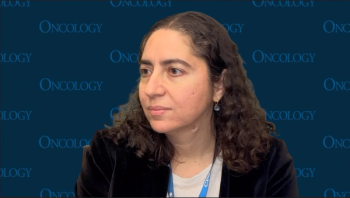
Advancing Pancreatic Cancer Care Through Intraoperative Radiation Therapy
Experts from Vanderbilt Medical Center review mechanisms, supporting data, and patient cases associated with the use of IORT in pancreatic cancer.
CancerNetwork® spoke with Kamran Idrees, MD, MSCI, MMHC, FACS; Natalie A. Lockney, MD; and Milad Baradaran, PhD, DABR, about the potential utility of intraoperative radiation therapy (IORT) among patients with pancreatic cancer. The group detailed the design and mechanism, gradual technical advancements, and trial data supporting the application of this radiotherapy modality for this patient population.
Idrees is the chief in the Division of Surgical Oncology & Endocrine Surgery, an associate professor of surgery, an Ingram Associate Professor of Cancer Research, and director of Pancreatic and Gastro-Intestinal Surgical Oncology at Vanderbilt University Medical Center. Lockney is an assistant professor in radiation oncology and the program director for the radiation oncology medical residency at Vanderbilt University Medical Center. Baradaran is the head of quality assurance operations and assistant professor in the Department of Radiation Oncology at Vanderbilt University Medical Center.
As part of this discussion revolving around IORT, the group outlined the optimal conditions for using this technique depending on the extent of disease resectability in patients. Specifically, Idrees categorized patients as belonging to one of 3 major groups: those with metastatic disease, those with resectable disease, and those with borderline resectable or locally advanced disease. When considering these factors, patients with borderline resectable disease may be suitable to undergo IORT in combination with chemotherapy, radiotherapy, and surgery.
The conversation also focused on a particular case involving a patient with pancreatic cancer who received IORT at their institution. Based on the outcome of this case, they highlighted how multidisciplinary collaboration in combination with careful patient selection may offer surgical resection through IORT.
“[There] has to be a multidisciplinary team approach to carefully select these patients and [determine] who can benefit from this procedure,” Idrees said. “For the families and the physicians who are taking care of [patients with] pancreatic cancer, it’s valuable to obtain a second opinion, even if [the tumor is] initially deemed unresectable. What’s unresectable in one surgeon’s hands may be resectable in a different team,” he added.
Newsletter
Stay up to date on recent advances in the multidisciplinary approach to cancer.




















































































